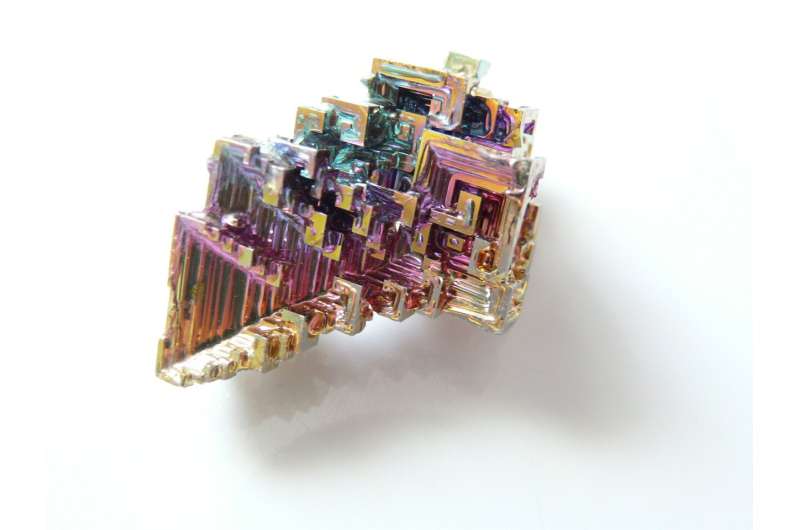January 21, 2020 report
Making bismuth behave like a transition metal

A team of researchers at the Max Planck Institut für Kohlenforschung has found a way to get bismuth to behave like a transition metal. In their paper published in the journal Science, the group describes their method to get bismuth to orchestrate bond-swapping events.
Bismuth is a reddish-gray pentavalent post-transition metal—it is brittle and white when first produced. It gets its reddish hue due to oxidation. It is used in a wide variety of products, including pharmaceuticals, pigments and cosmetics. It is less often used as a reagent in chemical reactions. The chemists with this new effort sought to change that because bismuth, unlike most other metals, is safe for human consumption.
The researchers note transition metals are useful as catalysts because they can move back and forth between oxidation states. Such flexibility allows them to slip in and out of chemical bonds. This allows them to be used in applications where they can snip bonds between a nonmetallic solid such as boron and carbon—and then add a carbonfluorine as its replacement. The researchers note that using bismuth instead would allow chemists to carry out similar reactions, resulting in safer end products.
The work by the team involved producing a catalyst by optimizing ligands that featured a sulfoximine moiety that could be used for the fluorination of aryl boronic esters through bismuth redox cycles. The different bismuth species underwent crystallographic characterization along with investigations of carbon-fluorine bonding events, which led to the identification of features that could be used to carry out a full catalytic cycle. They point out that the reaction they developed required a mechanistic rationale—it could not have come about through random mixing.
The researchers note that there are still issues with the reactions that must be addressed before bismuth can be used as a transitional metal. They describe their work more as a proof-of-concept than a demonstration of bismuth use in commercial applications. They further suggest that their approach will likely lend itself to reactions that cannot be done with other metals rather than replacing metals in reactions that are already used in commercial applications.
More information: Oriol Planas et al. Fluorination of arylboronic esters enabled by bismuth redox catalysis, Science (2020). DOI: 10.1126/science.aaz2258
Journal information: Science
© 2020 Science X Network





















